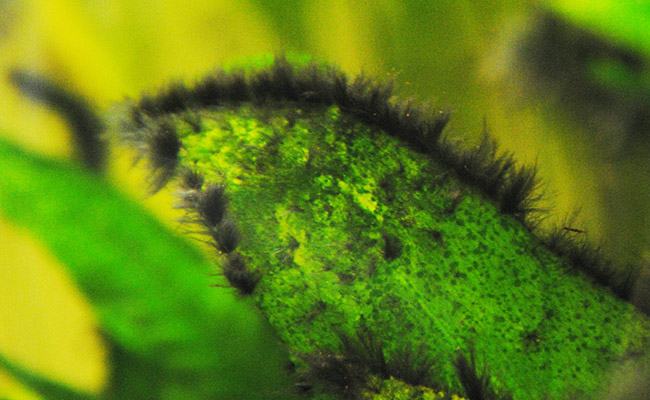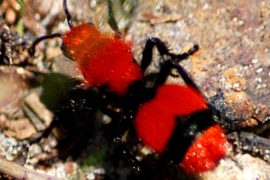Anyone who discovers black algae in their aquarium should act quickly. What is often referred to as “black algae” is actually a representative of the red algae. Read here how to correctly identify algae and what you can do to get rid of the nuisance.
Black algae – definition and designation
Throughout this article, we will use the term black algae – even if this is actually not biologically correct: there is no such thing as black algae. If you discover black algae in your aquarium, you are likely to have a representative of the red algae in front of you. They often look black and are therefore often referred to as black algae. We know two representatives of the red algae from the aquarium: the brush algae and the beard algae.
Where do black algae occur?
Black algae are mainly found on furnishings and decorative objects in the aquarium. They sit on stones, roots or on the aquarium technology. They also settle on the edges of the leaves of aquarium plants. Slow-growing plants are particularly often affected.
Correct identification of black algae: Which algae do I have in front of me?
Even for experts, it is not always easy to tell apart types of algae. A black alga can be a red alga. But in rare cases even filamentous algae look almost black. There is sometimes confusion here. It is even more difficult to distinguish between the two types of red algae, which black algae can belong to. See the table below for help.
Black algae are usually black or blackish in color: the shades range from deep black to gray to dark green. So it’s difficult to tell them apart by color.
A surefire way to identify black algae as red algae is to soak them in high-proof alcohol. The algae change color after a while and become red.
Black Algae: Determination
Black Algae: Brush Algae?
Brush algae usually form dark, dense clumps. Like the bristles of a soft brush, they look rather delicate and supple.
The length of the “brush bristles” reaches up to about two centimeters in length.
The outgrowths of this black algae do not branch.
Black Algae: Beard Algae?
The growth form of the beard algae is characterized by thicker, curly “hairs” that are less dense than those of the brush algae.
Beard algae reach a significantly greater length than other black algae. Around ten centimeters are not uncommon.
This alga partially branches.
How can I remove black algae?
In order to quickly get rid of the unloved guests, you need to use a few simple measures against black algae.
Identify the black alga: is it a beard alga or a brush alga?
Find out exactly what type of algae you are dealing with so that you can take action. In our blog you will find more information about both species (brush algae and beard algae) and other types of algae in the aquarium.
Take measures to remove algae. Manual removal of the black algae also plays an important role here. With these species, however, a particularly thorough procedure is necessary. You can read in detail how to remove red algae from the aquarium in our article on the subject.
Ensure that the conditions in your aquarium allow optimal plant growth. General tips for preventing and combating algae in the aquarium and a checklist for caring for aquarium plants can be found here in the blog. Don’t give the black algae a chance to appear again with a dense and healthy growth of aquarium plants.
We wish you every success in combating black algae!





